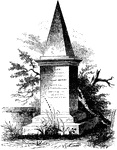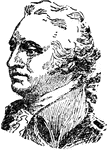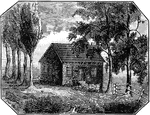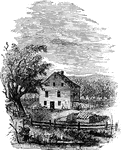The Pennsylvania ClipArt gallery includes 130 illustrations related to the Keystone State.

Walnut Street Front
David Rittenhouse erected a temporary observatory for the purpose of observing the transit of Venus…

Walnut Street Prison
"The Walnut Street Prison. This edifice was erected in 1774, and taken down in 1836. The beautiful new…

Wayne's Monument
General Anthony Wayne's monument at St. David's Episcopal Church, Radnor, Pennsylvania.

Anthony Wayne
An eminent general, born in East Town, Penn., Jan. 1, 1745; died in Erie, Penn., Dec. 15, 1796.

School House in Gray's Ferry, Philadelphia
"Fig 13 - Wilson's School-House, near Gray's, Ferry, Philadelphia. From a drawing by M. S. Weaver, Oct.…

Site of Wintermoot's Fort
The Battle of Wyoming was an encounter during the American Revolutionary War between American Patriots…

James Frederick Wood
An American Roman Catholic, prelate, born in Philadelphia, April 27, 1813; died there June 20, 1883.

The Wyoming Monument
The Monument marks the grave site of the bones of victims of the Wyoming Massacre, which took place…

Wyoming Valley Massacre
The Battle of Wyoming was an encounter during the American Revolutionary War between American Patriots…
